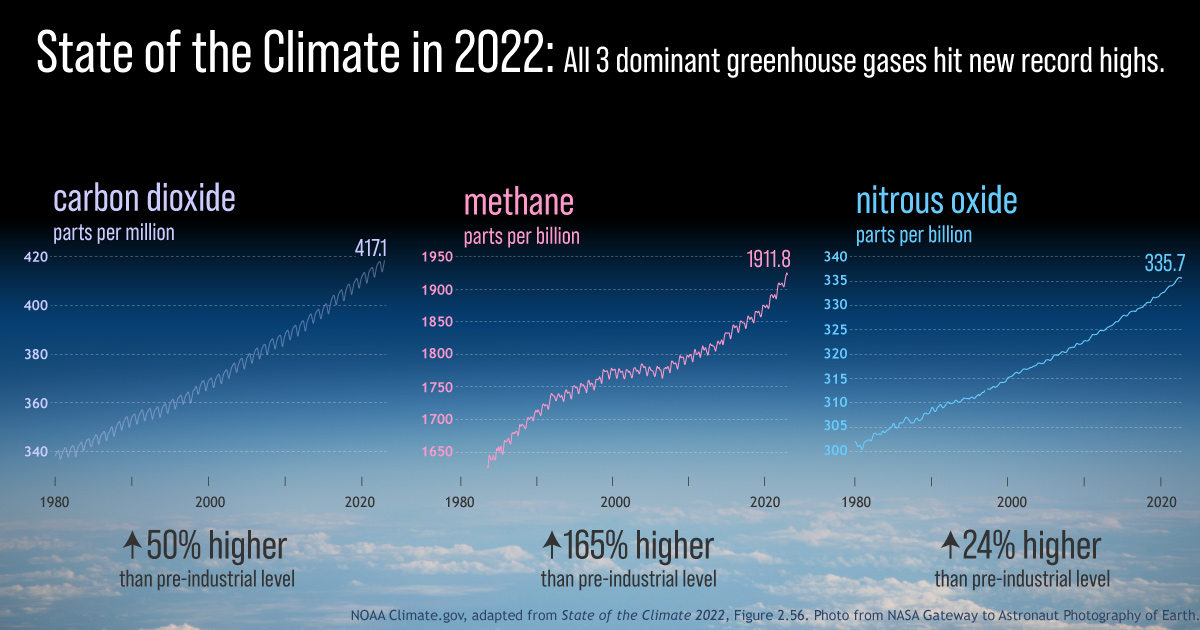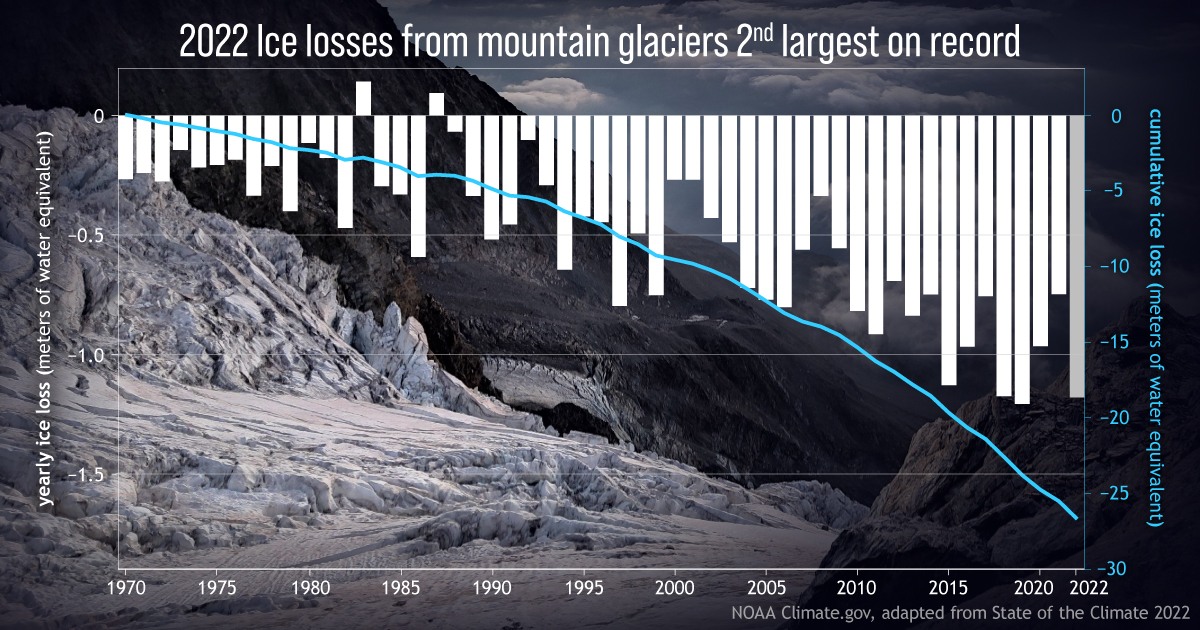State Of The Climate, 2022
Global surface temperature, 2022 (credit: NOAA)
The National Centers for Environmental Information (NCEI), part of NOAA, released its State Of The Climate assessment summarizing environmental data the Agency gathered last year. It isn't good. According to the NCEI, key measures of temperature, rainfall, drought, and storms included:
- The average temperature of the continental USA was 53.4°F, 1.4°F above average, ranking the 3rd warmest measured;
- precipitation was 28.35 inches, 1.59 inches below average, ranking 3rd third lowest on record;
- 18 billion dollar weather and climate related events occurred, the 3rd highest disaster count and the 3rd costliest in 43 years of record keeping;
- Hurricane Ian devastated parts of Florida, the 3rd costliest after Katrina(2005) & Harvey(2017);
- the Hermits Peak fire in New Mexico was the largest on record with 340,000+ acres consumed;
- droughts remained significant coverage for the second year in a row with a minimum extent of 44% in September and a maximum coverage of 63% in October, the largest area of drought since 2012, impacting much of the western US;
- for the majority of 2022 many major reservoirs were at or near record low water levels with;
- more than 40% of the contiguous U.S. in drought for 119 weeks, a record in the 22 year history of the U.S. Drought Monitor.
If these determinations weren't bad enough, greenhouse gas concentrations, global sea levels, and ocean heat content also reached record highs. The annual review of global climate, led by NOAA researchers, was published by the American Meteorological Society (AMS) and based on contributions from more than 570 scientists in over 60 countries. The assessment provides the most comprehensive update on climate indicators, notable weather events and environmental data, collected by monitoring stations and instruments on land, in the oceans, and from satellites. In releasing their report, the Center's director said:
This annual physical of the Earth's system serves present and future generations by documenting and sharing data to indicate increasingly extreme and changing conditions in our warming world.
Two graphics showcase the rise in heat-trapping atmospheric gasses and their impact on ice from mountain glaciers during the past year.


Primary greenhouse gas emissions, 2022 (credit: State of the Climate, 2022/NOAA) Mountain glaciers' ice loss, 2022
NOAA's entire climate assessment is available here. WHB